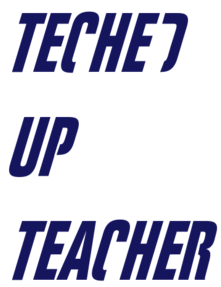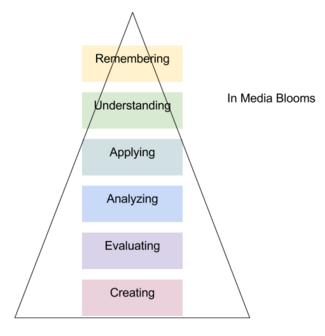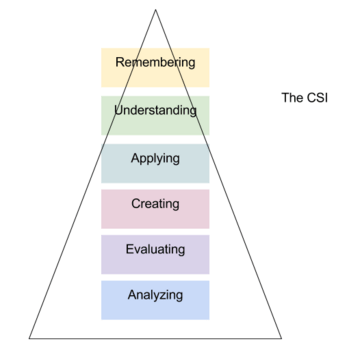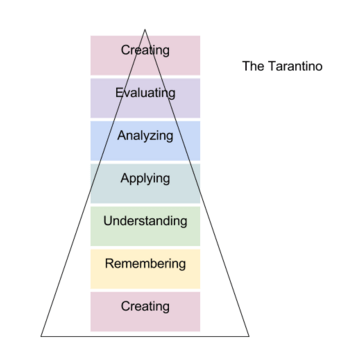In Media Blooms

Tyler gets me a job as a waiter, after that Tyler’s pushing a gun in my mouth and saying, the first step to eternal life is you have to die. For a long time though, Tyler and I were best friends. People are always asking, did I know about Tyler Durden. The barrel of the gun pressed against the back of my throat, Tyler says, “We really won’t die.”

Fight Club, Chuck Palahniuk
For years, Fight Club was my Sophomores’ favorite book. The dystopian, coming-of-age tale about grown men emasculated and enslaved by a society they desperately want to escape appealed to my mostly reluctant readers.
Fight Club was also part of my larger move toward an engaging, student-centered classroom. Fight Club was the hook I used to engage my students with Transcendentalism and was one of many changes I was making to re-engage my kids with their learning. Other changes included blending and gamifying my classroom, but all was for naught if I didn’t rethink how I was teaching. I wanted to hook them early in a lesson and keep them interested throughout a unit.
The above excerpt from Fight Club is the book’s very first paragraph. Palahniuk starts Fight Club using a storytelling technique called In Media Res. Stories that start In Media Res skip exposition and start in the middle of the action to better engage the audience. Exposition is usually filled in afterward through things like flashbacks or dialogue. Every storytelling vehicle (TV, movies, and video games, etc.) have all used In Media Res effectively. It isn’t some new trick to hook an audience obsessed with technology with withered attention spans. The Roman poet Horace was the first to mention the writing style in 13 BC.
During the opening of Fight Club, I would ask my students why they thought the Narrator’s best friend was sticking a gun in his mouth. Their theories may have been wild, but they were definitely engaged and were more interested when I explained the book’s connection to Transcendentalism as we started in on Emerson and Thoreau.
To better engage my students, I began to look at Bloom’s not as a hard order of learning, but as pieces of a learning story I wanted to tell students during a unit. I discovered, like Palahniuk playing with the order of his story, by playing with the order of Bloom’s I could create a more engaging learning experience. Here are a few examples:
Tools and ideas to transform education. Sign up below.
The In Media Blooms is an engaging way to move students toward problem and project-based learning quickly and the only example I’ve been able to find of others playing around with Bloom’s structure.

In my class, grouped students start with inquiry surrounding a self-generated or teacher generated problem, challenge, or hypothetical. Next students create a mockup, blueprint, storyboard, or other type of proposal. Students then Evaluate and Analyze creations, usually in a group setting, then apply new knowledge to their creation. Another great way to use In Media Blooms would be to create a lab-first science class.
One of my favorite lessons was teaching argumentative writing using The CSI. With no warning, one morning students walked into my classroom crime scene. I had staged an elaborate crime scene that, under scrutiny, didn’t match the
Coroner’s report. By analyzing and evaluating the crime scene and then creating and applying a theory based on deductive reasoning, students were able to understand what may have happened and left remembering the difference between persuasive writing and argumentative writing.

The Tarantino starts at the end and wraps back around to a full-circle finish. I like The Tarantino because students get to tackle a performance task more than once. In New Jersey, we are expected to give our mandatory Student Growth Objectives in this fashion, but I’ve found benefit in allowing students to see this growth in other lessons, too. By circling back to a creation, students have a better understanding of how they’ve grown.

By rearranging how you tackle Bloom’s in your classroom and moving the more engaging, student-centered learning earlier in the unit, it is easier to get buy in from your students. I have found my students are more willing to give learning a try if I hook them early, like an author hooks a reader by playing with story structure, and put the learning in their hands as soon as possible. Applying In Media Res to unit creation allows you to skip the teacher-centered exposition that students can later fill in with “flashbacks and dialogue” like having students collaborate in groups, allowing for inquiry and feedback throughout units, and by ending units with presentations and reflections.
This is by no means a panacea nor appropriate for every learning endeavor, but since I’ve started to play around the Bloom’s as a means of telling a unit’s story, my classroom has become a more student-centered, engaging, and fun place to learn.
I have a few more examples I could share, but I’d love to hear how you are experimenting with Bloom’s in your classroom!
Until next time,
GLHF
cross-posted at Teched Up Teacher
Chris Aviles presents on education topics including gamification, technology integration, BYOD, blended learning, and the flipped classroom. Read more at Teched Up Teacher.
Chris Aviles is a STEM teacher, edtech specialist, and president of Garden State Esports. He is also a regular contributor to Tech & Learning.
